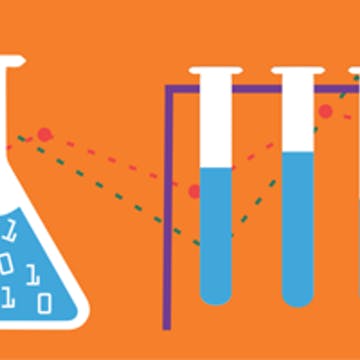
Несмотря на то, что в последние десятилетия существенно выросли вычислительные возможности и доступ к данным, наша способность использовать эти данные для принятия решений либо снижается, либо не используется с максимальной эффективностью. Чаще всего у нас отсутствует глубокие знания о задаваемых вопросах и том, как правильно применять данные для решения определенной проблемы.
У этого курса всего одна задача, и она заключается в том, чтобы познакомить вас с методами, которые можно использовать при обработке и анализе данных, чтобы убедиться в том, что используемые для решения проблемы данные правильно подобраны и обработаны для...
Read more
Good to know
Save this course
Activities
Review statistical concepts
Show steps
Refresh your knowledge of statistical concepts to prepare for this course's emphasis on data analysis.
Browse courses on
Statistical Concepts
Show steps
-
Review notes or textbooks on basic statistical concepts, such as mean, median, and standard deviation.
-
Take practice quizzes or online tests to assess your understanding.
Learn Python for data analysis
Show steps
Solidify your understanding of Python programming, a foundational tool for data analysis in this course.
Browse courses on
Python
Show steps
-
Complete online tutorials or courses on Python basics.
-
Practice writing Python code for data manipulation and analysis.
Practice data cleaning and manipulation
Show steps
Develop proficiency in data cleaning and manipulation, essential skills for working with real-world datasets.
Browse courses on
Data Cleaning
Show steps
-
Find practice datasets online or create your own.
-
Use Python or other tools to clean and manipulate the data.
Two other activities
Expand to see all activities and additional details
Show all five activities
Build a data visualization project
Show steps
Apply your knowledge of data analysis by creating a data visualization project that communicates insights from a dataset.
Browse courses on
Data Visualization
Show steps
-
Choose a dataset and identify the key insights you want to convey.
-
Select appropriate visualization techniques and tools.
-
Create the visualization and refine it based on feedback.
Tutor peers in data analysis concepts
Show steps
Reinforce your understanding of data analysis by helping others learn these concepts.
Browse courses on
Mentoring
Show steps
-
Identify opportunities to tutor peers or participate in study groups.
-
Prepare materials and practice explaining data analysis concepts clearly.
Review statistical concepts
Show steps
Refresh your knowledge of statistical concepts to prepare for this course's emphasis on data analysis.
Browse courses on
Statistical Concepts
Show steps
- Review notes or textbooks on basic statistical concepts, such as mean, median, and standard deviation.
- Take practice quizzes or online tests to assess your understanding.
Learn Python for data analysis
Show steps
Solidify your understanding of Python programming, a foundational tool for data analysis in this course.
Browse courses on
Python
Show steps
- Complete online tutorials or courses on Python basics.
- Practice writing Python code for data manipulation and analysis.
Practice data cleaning and manipulation
Show steps
Develop proficiency in data cleaning and manipulation, essential skills for working with real-world datasets.
Browse courses on
Data Cleaning
Show steps
- Find practice datasets online or create your own.
- Use Python or other tools to clean and manipulate the data.
Build a data visualization project
Show steps
Apply your knowledge of data analysis by creating a data visualization project that communicates insights from a dataset.
Browse courses on
Data Visualization
Show steps
- Choose a dataset and identify the key insights you want to convey.
- Select appropriate visualization techniques and tools.
- Create the visualization and refine it based on feedback.
Tutor peers in data analysis concepts
Show steps
Reinforce your understanding of data analysis by helping others learn these concepts.
Browse courses on
Mentoring
Show steps
- Identify opportunities to tutor peers or participate in study groups.
- Prepare materials and practice explaining data analysis concepts clearly.
Career center
Data Analyst
Data Scientist
Business Analyst
Statistician
Data Architect
Risk Analyst
Product Manager
Data Engineer
Data Visualization Specialist
Quantitative Analyst
Market Researcher
Chief Data Officer
Data Privacy Officer
Data Scientist Manager
Machine Learning Engineer
Reading list
Share
Similar courses
OpenCourser helps millions of learners each year. People visit us to learn workspace skills, ace their exams, and nurture their curiosity.
Our extensive catalog contains over 50,000 courses and twice as many books. Browse by search, by topic, or even by career interests. We'll match you to the right resources quickly.
Find this site helpful? Tell a friend about us.
We're supported by our community of learners. When you purchase or subscribe to courses and programs or purchase books, we may earn a commission from our partners.
Your purchases help us maintain our catalog and keep our servers humming without ads.
Thank you for supporting OpenCourser.



